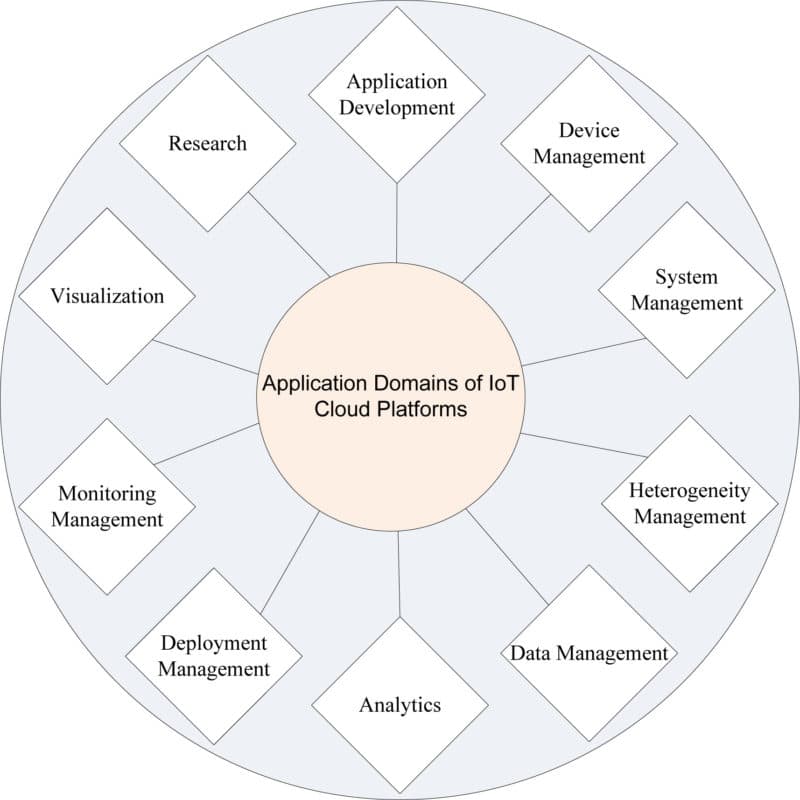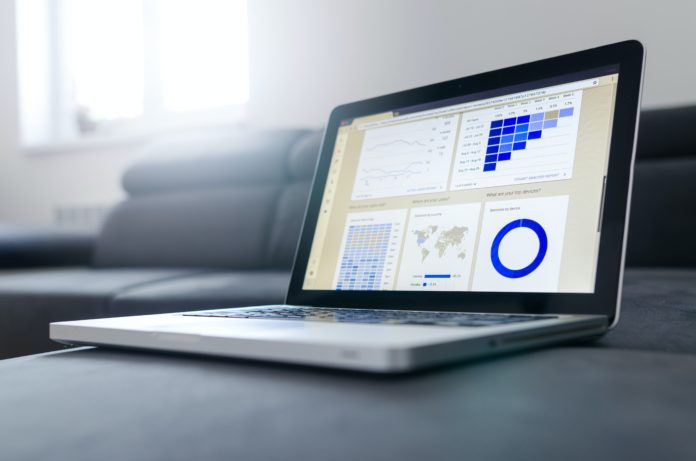IoT is not as simple as it was two decades ago. Due to the huge influx of data, companies felt the need of having a comprehensive platform to manage and analyze data as well as the IoT hardware. Today, there are hundreds of such platforms to choose from!
Kevin Ashton, sometimes referred to as the “Father of IoT” coined the term Internet of Things back in 1999, and used it as the title of his presentation when he was working with P&G. In his publication called That “Internet of Things” Thing published in the RFID Journal in 2009, Ashton argues that computers – and therefore, the internet – are heavily dependent on humans for data. But humans are not even that good at capturing data! “Our economy, society and survival aren’t based on ideas or information—they’re based on things”.
During his presentation, Ashton also said, “If we had computers that knew everything there was to know about things—using data they gathered without any help from us—we would be able to track and count everything, and greatly reduce waste, loss and cost.” Today, almost 2 decades later, IoT has become a common term and there are more objects, or things, that are connected to the internet than humans!
A lot has changed since then, and IoT has evolved. After 2015, big tech giants like Amazon and Google launched their cloud platforms with extended IoT services. Using such cloud platforms has become common (if not essential) today, but they were not common earlier. In fact, the earliest IoT devices like the “Internet Toaster”, built by engineers John Romkey and Simon Hackett in 1990, used the TCP/IP protocol.

What is an IoT Platform
When it comes to IoT, the software is just as important as the hardware – the things. IoT platforms are basically a sort of bridge between data (obtained from the things) and end-user applications – a middleware. Akash Bhatia, partner and MD at The Boston Consulting Group, defines an IoT platform as followed: “Fundamentally, an IoT platform connects devices, applications, and data so users can focus on their use case rather than on the wiring in between.”
Today, nearly all applications can benefit from data and can be made “smart” thanks to IoT. All of these applications are different from one another and focus on different aspects of the data. Since there are multiple (more than 400!) IoT platforms available in the market with different permutations and combinations of features, selecting the right platform is very important for IoT developers.
Plethora of Platforms
Sure, IoT devices can be made without an IoT platform, but as data becomes complex, we’ll need more storage, better computing, and many more features. Therefore, having a platform makes it easier to manage data, run analytics, and do much more.
After around two decades of IoT coming into the picture, we’d expect the IoT Platform market to be mature now, but that’s not the case. In general, in a mature market, there are two to three options like Windows, Mac, and Linux in the OS market. But for IoT platforms, there are so many options to choose from.
Many companies have their own IoT platforms, these include tech giants like Microsoft, Google, AWS and IBM. Then there are platforms that focus on specific industries like manufacturing or logistics. There also are platforms developed by networking companies like Vodafone and AT&T that have very good networking capabilities. Similarly, platforms by device manufacturers focus more on device management. You can just imagine how many categories we can create.
IoT Platforms and Cloud Computing
IoT platforms and cloud computing platforms are very different from each other. IoT platforms can actually be built using cloud services like Azure, in a way that cloud computing actually becomes a part of the IoT platform. For example, Microsoft Azure and Azure IoT are two separate technologies where Azure IoT is built on top of Microsoft Azure.
Similarly, you can build an IoT platform for your company on your own, by building it on top of cloud computing services. Essentially, you have taken an IaaS (Infrastructure as a Service) and created a PaaS (Platform as a Service). Siemens MindSphere is actually built on SAP Cloud Platform, and Oden Technologies, an industrial automation company, uses Google Cloud.
Many companies prefer creating their own platforms because they want one that’s specifically tailored to their needs. On the other hand, many startups prefer to launch with an existing IoT platform, since building one from scratch is time-consuming and requires a certain amount of expertise.

Types of IoT Platforms
From a broader perspective though, IoT platforms can be classified as given below. You may notice that each of these focus on different parts of the IoT Technology Stack.
- IoT Connectivity Management Platforms
- IoT Device Management Platforms
- IoT Analytics Platforms
- IoT Cloud Platforms

1] IoT Connectivity Management Platforms
It is obvious that connection to the internet is one of the most crucial aspects of IoT – it wouldn’t be IoT otherwise! Usually, this happens via WiFi, when devices are either directly connected to the local WiFi or via a gateway. But in many applications, the devices are deployed in places without WiFi connectivity – in smart cars, fleet tracking applications, etc… In such cases, connectivity is obtained through cellular providers and operators like 4G/ 5G or SigFox.
IoT Connectivity Management Platforms are responsible for maintaining a secure connection between your IoT hardware and your cloud infrastructure or end applications. This way, you need not rely on carrier companies to establish your connectivity. Instead, these platforms give you a good interface for managing your device connectivity with support for multiple carriers.
A few examples of such platforms would be Cisco IoT Control Center, Vodafone IoT Platform, AT&T Managed IoT Connectivity Services. Some cloud platforms like Microsoft Azure also have connectivity capabilities.
2] IoT Device Management Platforms
According to Statista, the total installed base of Internet of Things (IoT) connected devices worldwide is projected to amount to 30.9 billion units by 2025, a sharp jump from the 13.8 billion units that are expected in 2021. Efficient management of such a large number of devices, their configuration, monitoring, and maintenance is possible with the help of IoT Device management platforms.

Most IoT platforms including Google Cloud IoT Core, AWS IoT, and Azure IoT offer device management services. However, there are many platforms that also specialize in device management like Intel IoT, Particle, and Carriots.
3] IoT Cloud Platforms / Application Enablement Platforms
These are platforms that provide comprehensive end-to-end services. They can be industrial, consumer-facing, or designed for a particular sector and are great for prototyping as well. They are highly scalable and there are many, many options available in the market. You can say that they are meant for quick prototyping, development, and deployment of your application.
The reason why using these platforms will decrease your time-to-market is because they don’t focus on one aspect of your system – connectivity, management, or analytics. They focus on the whole architecture itself. So if your system does not solely focus on one aspect of the IoT technology stack, it would make sense to use cloud platforms or AEPs. IoT83 is a good example of such a platform apart from Azure IoT and AWS IoT.
4] IoT Analytics Platforms
In data-driven IoT applications, the analysis of data received from the hardware is of vital importance. All IoT applications involve data, but there are some that specifically need ML/AI capabilities, infrastructure for data harvesting, modeling, and analysis. What’s essential in such applications is making sense of the data.
IoT analytics platforms provide these services and are focused on heavy-duty analytics. Some examples of analytics platforms would be C3 AI, SAS Analytics for IoT, and Watson by IBM. However, the distinction between IoT analytics platforms and IoT cloud platforms has started to disappear. In fact, many big cloud platforms have features for not just analytics, but also for connectivity as well as device management.
Security for IoT Platforms
Bristol, a city in the United Kingdom is on its way to becoming a smart city. Imagine you live in such a smart city, with IoT devices present on roads, in the traffic signals, and even inside buildings. Now imagine the IoT platform or service being hacked – this would be a looming threat to your safety. IoT security breaches can have terrible consequences, which is why it is important to secure your system at each level of the IoT technology stack.
While selecting an IoT platform, one must choose a platform with good security solutions. Cloud Security Command Center is one such solution provided by Google. It offers several threat prevention and detection services and tools. It is always a good practice to encrypt your data and use secure communication protocols. If you are creating your own IoT platform from scratch, you can include security features at each stage of the development process, even at earlier stages.
Current Trends
Edge computing and IoT Platforms
Edge computing has several distinct advantages and these are even more evident when it comes to IoT. Any IoT device that can do heavy computing on its own eventually reduces the amount of cloud space required, decreases decision latency, and also makes the system less dependent on services provided by cloud companies. As a result, IoT edge platforms like AWS Greengrass, Gravio Edge IoT Platform, Google Edge TPU, etc are on the rise.
5G
With the advancement of 5G, it will be even easier to connect IoT hardware to a cloud platform. 5G is a scalable and pretty economical technology. 5G has the potential to take IoT to the next level. We can now expect many IoT Communication Platforms that are based on 5G. StarHub 5G IoT Platform is one such platform. It has connectivity options ranging from WiFi to 4G and 5G.
More AI & ML Capabilities
IoT combined with AI and ML help revolutionize industries and businesses. Many IoT platforms have AI capabilities for better analytics, decision-making, and risk management. IoT Analytics platforms mentioned above also have these capabilities. According to the IBM Global C-suite Study program, reinventors (people who are trying to digitize their business) are looking forward to integrating IoT with AI/ML.
It is evident that IoT platforms have not yet reached maturity. This makes it a big challenge for young businesses to decide which one to use. There are several tradeoffs and many selection criteria involved. The second part of this article will focus on the various IoT platforms in the market and how you can select the best one for your business.

The author, Aaryaa Padhyegurjar, is an industry 4.0 enthusiast with a keen interest in innovation and research.









